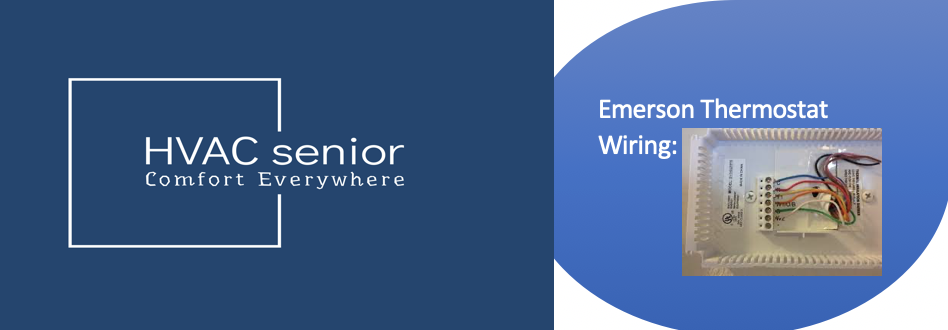Why won’t my furnace turn on? Find out and Fix it.
A furnace not turning on can be a frustrating and potentially uncomfortable situation, especially during the cold months. When your furnace fails to start, it can result from various issues, ranging from simple thermostat problems to more complex electrical or mechanical failures.
In this brief discussion, we’ll explore common reasons behind a non-operational furnace, offering insight into troubleshooting steps and potential solutions.
At a glance: Why won’t my furnace turn on?This is because Thermostat Has No Power,The Thermostat Settings Are Wrong,Safety Switch Is Engaged or Malfunctioning,Limit Switch Has Tripped,Condensate Drainage Tube Is Blocked or the Flame Sensor Is Dirty.
Understanding these issues is essential for homeowners to ensure their heating system functions reliably and efficiently when needed, preventing chilly discomfort and costly repair bills.
Also read>>>>Furnace High Limit Switch.
Reasons and Fixes for a Furnace Not Turning On
Whether your furnace is powered by gas, oil, or electricity, it all starts with the thermostat. The thermostat sends instructions, provided it has power and is functioning correctly, to a transformer.
The transformer relays these signals to the furnace control board, which then distributes them to the various components inside the furnace.
The first component to activate is the blower, a large fan often found in a separate housing called the air handler. After the blower starts, there is typically a short delay before the furnace itself engages.
For gas furnaces, this includes the ignitor sparking and another delay before the gas valve opens to ignite the burner. In the case of oil furnaces, the fuel pump begins to spray oil once the electronic ignitor activates. Electric furnaces activate their heating element, and heat pumps power up their compressor.
While mechanical issues can disrupt furnace operation, many problems stem from electrical signal interruptions between the thermostat and the furnace equipment.
Furnaces feature safety switches to prevent overheating and gas-related accidents. If a safety switch is triggered, it can often be reset. Regular furnace maintenance, including filter replacement and cleaning, helps prevent these interruptions and keeps your system running smoothly.
Here’s a list of reasons your furnace won’t turn on and some troubleshooting tips.
1.Thermostat Has No Power.

When your thermostat isn’t receiving power from the system transformer, it can’t communicate with your HVAC system, potentially causing your furnace to remain inactive. To address this issue, follow these steps:
- Check Circuit Breakers: Open your electrical panel and inspect the circuit breakers. If one has tripped, it might have an orange warning flag. Flip it off (toward the outside of the panel) and then back on (toward the center) to reset it. Also, ensure the furnace switch, which resembles a light switch on the furnace or air handler, is in the “on” position.
- Battery or C-Wire Check: If the thermostat still doesn’t function, consider changing the batteries. If your thermostat lacks batteries, it relies on a common wire (C-wire) to draw power from the transformer. You can use a multimeter to check for voltage:
a. Remove the thermostat cover to expose the wires. b. Set your multimeter to measure voltage in the 24-volt range. c. Touch one lead to the red power wire connected to the R or RH terminal and the other lead to the blue or black wire connected to the C terminal. You should get a reading between 22 and 28 volts.
If you don’t measure the expected voltage, inspect the wire connections at the thermostat and inside the system control board to ensure they are secure. If they are, the problem might lie with a malfunctioning transformer, which may require replacement.
Also read>>>>Furnace Fan Won’t Turn On.
2.The Thermostat Settings Are Wrong.
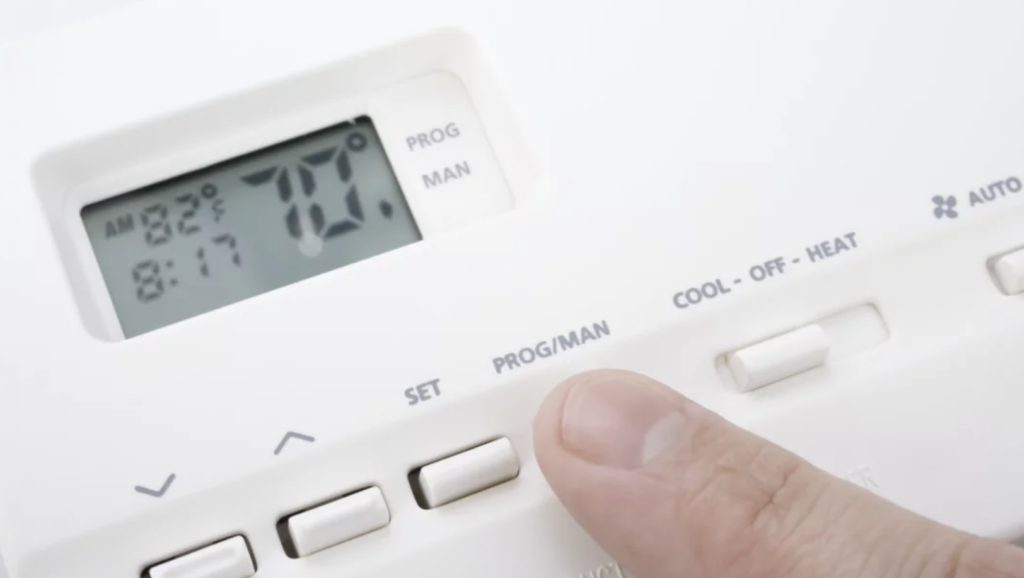
Checking the thermostat settings is a crucial step in troubleshooting a furnace that won’t turn on. Here’s a more detailed explanation:
- Fan Setting and Mode Selector: Start by examining the fan setting on your thermostat. If it’s set to “ON,” it means the blower runs continuously, blowing unheated air even when the furnace is off. To address this, switch the fan setting to “AUTO.” This adjustment ensures that the blower only activates when the furnace is actively heating the air. Additionally, confirm that the mode selector is set to “HEAT” and not accidentally switched to “COOL,” as this can prevent your furnace from starting when it should.
- Programmable Thermostats: If you have a programmable thermostat, it may be set to a lower temperature than the current room temperature, which can prevent the furnace from turning on. To test this, increase the temperature setting well above the room temperature. This change should trigger the thermostat to send a signal to the furnace to start heating. Wait for a few minutes to see if the blower and furnace come on. If you notice no response, your thermostat might be locked into a “permanent hold” mode, which maintains a set temperature.
- Disabling Permanent Hold: Consult your thermostat’s manual for instructions on disabling the “permanent hold” feature. This feature is often found in programmable thermostats and allows you to override scheduled temperature changes. By disabling it, you can regain control over the thermostat’s temperature settings and allow it to call for heat when needed.
By thoroughly examining and adjusting your thermostat settings, you can rule out common issues that might prevent your furnace from turning on.
This simple yet vital step can save you from unnecessary furnace repairs and ensure your heating system operates as intended, keeping your home warm and comfortable during the colder months.
Also read>>>>Furnace Gas Valve Not Opening.
3.A Safety Switch Is Engaged or Malfunctioning.

One often overlooked yet crucial aspect when troubleshooting a furnace that refuses to turn on is the safety feature associated with the door of the furnace or air handler. Here’s an in-depth explanation of how to address this potential issue:
- Safety Door Switch: Furnaces and air handlers are equipped with a safety door switch. This switch serves as a vital safety mechanism, designed to cut power to the system when the access door is open. The purpose behind this is to prevent any accidents or injuries that could occur if someone were to access the system while it’s running. If the door isn’t securely closed, the switch will disrupt the electrical circuit, effectively shutting down the furnace.
- Checking the Switch:
- Closing the Door: The initial step is to ensure that the access door to the furnace or air handler is fully closed and secured. It might seem like an obvious solution, but sometimes, the door can become slightly ajar, and the switch is triggered, leading to a no-start situation. Simply closing the door properly could resolve the issue.
- Switch Continuity Test: However, if closing the door doesn’t result in the system turning on, it’s important to verify the functionality of the door switch through a continuity test. Follow these steps:
a. Turn off Power: For safety, make sure to turn off the power to the furnace. You can do this at the circuit breaker or the main power switch for the furnace.
b. Disconnect Wires: Isolate the switch by disconnecting the wires attached to it. This prevents any electrical interference during the test.
c. Multimeter or Continuity Tester: Set your multimeter to measure resistance in ohms or use a continuity tester. Both tools can help you determine if the switch is functioning correctly.
d. Test Continuity: Touch one lead of your chosen tool to one of the switch terminals and the other lead to the other terminal. Push on the switch to simulate it being opened by the door.
If the switch is working as intended, the meter should read zero ohms, and if you’re using a continuity tester, the light should illuminate.
If you don’t get a reading of zero ohms or the light doesn’t come on, it indicates a lack of continuity, which means the switch is faulty and needs replacement.
Ensuring that the safety door switch is functioning properly is not only essential for your furnace to operate but also crucial for maintaining the safety of the system.
By following these steps, you can identify and rectify any issues related to the door switch, ultimately helping your furnace get back to its heating duties and providing warmth to your home during the chilly season.
Also read>>>>Furnace Turns On But No Heat.
4.The Limit Switch Has Tripped.
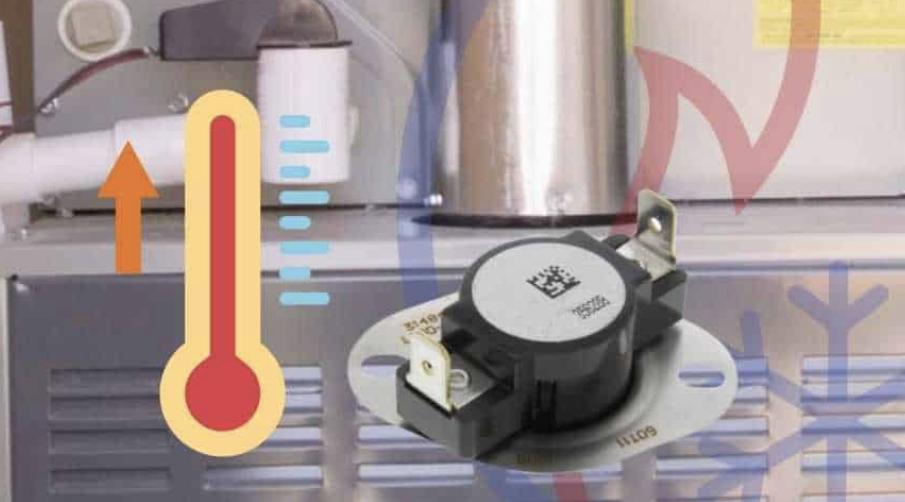
An often overlooked but critical safety feature found in most furnaces is the high limit switch. This switch is designed to shut off the system if the internal temperature of the furnace becomes too high, preventing potential overheating and associated safety hazards. Here’s a more detailed explanation of this aspect:
- High Limit Switch: The high limit switch serves as a crucial safety mechanism within your furnace. Its role is to monitor and regulate the internal temperature of the furnace. If this temperature exceeds safe levels, the high limit switch will trip, cutting power to the system. This action is essential in preventing overheating, which can lead to dangerous situations, including fires or other hazards.
- Resetting the Switch:
- Reset Button: Some high limit switches come equipped with a reset button. If your furnace has one, press it to reset the switch after it has tripped. This simple step can resolve the issue, and your furnace may resume normal operation.
- Power Cycling: If your high limit switch doesn’t have a reset button, you can usually reset it by following these steps: a. Turn off the power to the furnace. b. Leave the furnace off for a duration of 10 to 30 seconds. c. Turn the furnace back on.
- Recurring Tripping: If the high limit switch continues to trip repeatedly, it’s crucial to investigate the underlying cause. Often, insufficient airflow is a common culprit. This can be due to a clogged or dirty furnace filter. Regular cleaning and replacement of the furnace filter can help ensure proper airflow. Additionally, inspect your air ducts for dust buildup or other obstructions, as these can also impede airflow and lead to overheating issues.
- Serious Furnace Issues: If the high limit switch keeps tripping even after addressing airflow-related problems, it could be indicative of a more severe furnace issue, such as a cracked heat exchanger. This condition poses a significant safety risk, as it may result in carbon monoxide or gas leaks. In such cases, it’s imperative to contact a professional furnace repair service immediately. Only a qualified technician can properly diagnose and resolve complex furnace issues, ensuring the safety and efficient operation of your heating system.
Also read>>>>Furnace Shuts Off After Ignition.
5.The Condensate Drainage Tube Is Blocked.
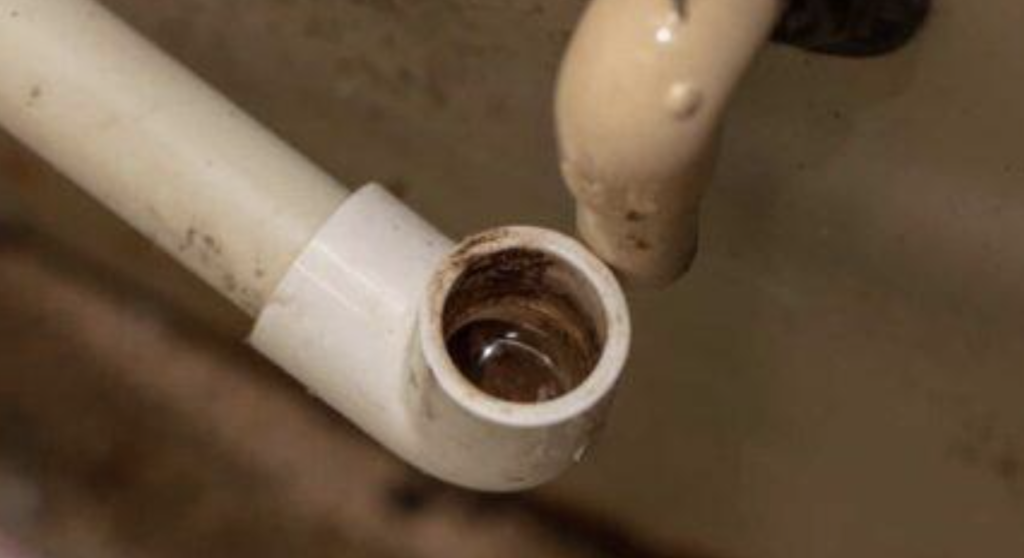
For those with a high-efficiency natural gas or propane furnace, characterized by an annual fuel utilization efficiency (AFUE) rating of 90 or higher, there are unique features to be aware of.
These furnaces typically utilize plastic vent pipes rather than traditional metal ones. They also incorporate a drain pan designed to collect the condensation produced in their secondary heat exchanger. In this system, a plastic tube directs the collected water outside.
However, if this drainage tube becomes obstructed, it can trigger a safety feature within the furnace.
Here’s a more detailed explanation of this situation:
- Drainage Blockage and Safety Feature: The high-efficiency furnaces mentioned utilize a drain pan and plastic tube to manage the condensation produced during the heating process. To prevent water overflow and potential damage, a float mechanism within the drain pan is employed as a safety measure. When the drainage tube becomes blocked and water can’t properly drain, the float is activated, shutting off the furnace system to prevent any further operation until the blockage is resolved.
- Clearing the Blockage: The easiest and most practical method to address this issue is to locate the exterior opening of the drainage tube. This opening can typically be found on the outside of your home where the tube terminates. To clear the blockage:
- Vacuum Method: Wrap a vacuum hose securely around the exterior opening of the tube. Use duct tape or a similar sealing method to ensure a tight seal between the hose and the tube.
- Wet/Dry Vacuum: Employ a wet/dry vacuum to suction out the blockage from the tube. This method effectively removes the obstacle, allowing the water to drain as intended.
By following these steps, you can resolve the drainage blockage and prevent the float mechanism from triggering a shutdown of your high-efficiency furnace. This ensures the uninterrupted and efficient operation of your heating system, helping to maintain a warm and comfortable home during the colder seasons. Regular maintenance, including checking and clearing the drainage system, is essential for the proper functioning of high-efficiency furnaces.
Also read>>>>Furnace Keeps Turning On And Off.
6.The Flame Sensor Is Dirty.
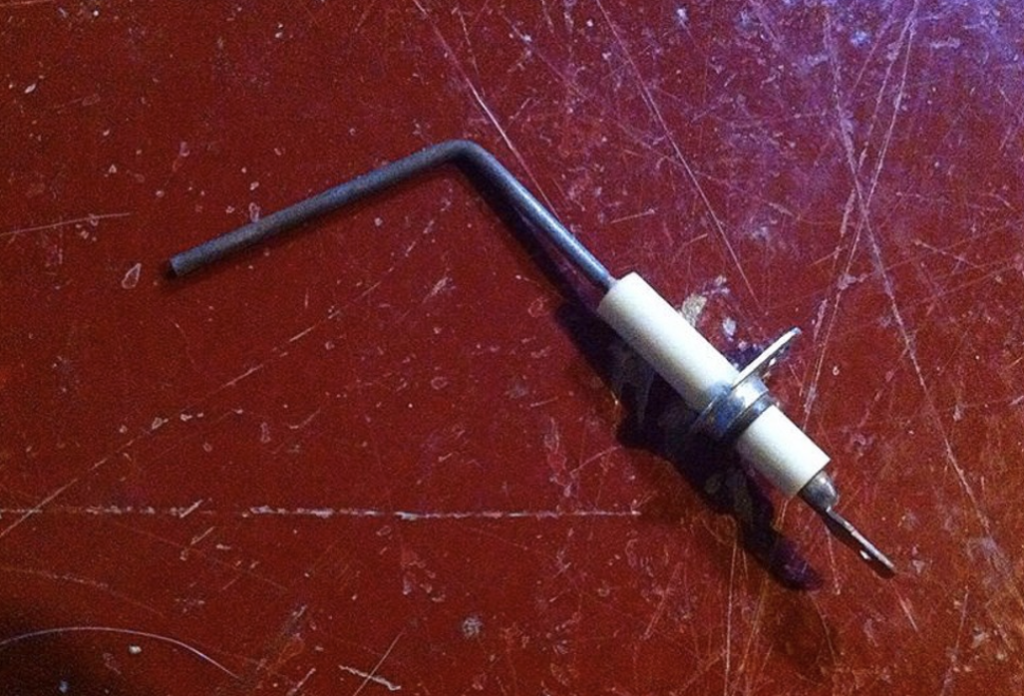
In your gas furnace, there’s a crucial component known as the flame sensor, unless you have an older furnace with a pilot light, which is now quite rare. The function of the flame sensor is similar to the thermocouple in older pilot light furnaces.
It generates an electrical signal when exposed to flames, ensuring that the gas valve remains open, allowing gas to flow to the burners.
However, if the flame sensor becomes coated with soot to the extent that it can no longer detect the flames, your furnace may exhibit a frustrating behavior of cycling on and off as soon as the burners ignite. The solution to this problem is to clean the flame sensor.
- Locating the Flame Sensor: Consult your furnace’s manual to identify the exact location of the flame sensor. Typically, it’s mounted on the side of the combustion chamber and secured by a single screw.
- Power Off: For safety, ensure that the power to the furnace is turned off. You can do this at the circuit breaker or the furnace’s main power switch.
- Removing the Flame Sensor: Unscrew the flame sensor and carefully pull it out of the combustion chamber. While the part you hold is often encased in porcelain, the actual sensor is a straight or L-shaped metal rod.
- Cleaning the Sensor: To clean the flame sensor, gently rub it down with a mildly abrasive material. Many professionals prefer using a dollar bill for this purpose. Avoid using sandpaper, as it can create deep scratches on the sensor that may collect soot.
- Reinstalling the Sensor: Place the cleaned flame sensor back into the combustion chamber and secure it with the screw.
- Power On: Turn the furnace back on, increase the thermostat setting, and observe whether the furnace successfully ignites and remains on. Cleaning the flame sensor should resolve the issue of the furnace cycling on and off due to a soot-coated sensor.
Also read>>>Furnace Leaking Water When AC Is Off.
Frequently Asked Questions (FAQs).
My furnace is not turning on. What should I check first?
Start by checking the thermostat settings. Ensure it’s set to “HEAT” mode and the fan is on “AUTO.” If you have a programmable thermostat, try raising the temperature setting well above the current room temperature. If it doesn’t respond, consult your manual for the procedure to disable the permanent hold feature.
My furnace is high-efficiency, and it’s not turning on. What could be the issue?
High-efficiency furnaces have a safety feature with a drain pan and a plastic drainage tube. If this tube becomes blocked, a float in the drain pan can shut off the system. To clear the blockage, locate the exterior end of the tube, seal a vacuum hose around it, and use a wet/dry vacuum to remove the obstruction.
My gas furnace is cycling on and off as soon as it ignites. What’s the likely problem?
This cycling issue may be due to a dirty or soot-coated flame sensor. To resolve it, locate the flame sensor, turn off the furnace power, remove and clean the metal rod using a mildly abrasive material, and then reinstall it. Ensure the sensor is free from soot buildup for optimal furnace performance.
What if my furnace still won’t turn on after troubleshooting thermostat settings, checking the drainage tube, and cleaning the flame sensor?
If these steps don’t resolve the issue, and your furnace continues to malfunction, it’s advisable to consult a professional furnace repair service. Persistent problems may indicate more complex issues that require expert diagnosis and repair to ensure the safe and efficient operation of your heating system.
Also read>>>Heat pump not working in cold weather.
Conclusion.
Addressing a furnace that won’t turn on involves a systematic approach to troubleshooting common issues. Starting with thermostat settings, mode, and battery checks can often resolve the problem.
However, in high-efficiency furnaces, understanding the drainage system and clearing blockages in the plastic drainage tube is crucial. Additionally, keeping the flame sensor clean is essential to prevent cycling issues.
Regular maintenance and timely attention to safety features are key to ensuring your furnace operates efficiently and safely.
If these steps do not resolve the problem, consulting a professional for more complex issues is the recommended course of action, safeguarding the warmth and comfort of your home during colder seasons.



